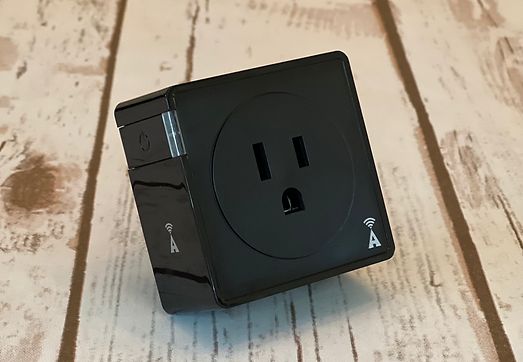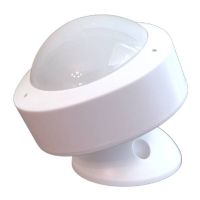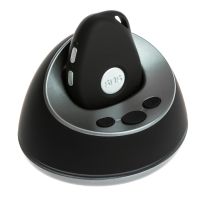 Written by Heather Collins, MSN, RN, CNOR
Written by Heather Collins, MSN, RN, CNOR
According to the Census Bureau, more than 56 million individuals in the US are over the age of 64, accounting for approximately 17% of the overall population. This number is only expected to grow as the baby boomer population continues to advance into older adulthood. With such a large population in question and shifting preferences to remain at home as they age, many technological advancements are underway to make aging in place a sound reality.
Aging in place typically refers to one’s ability to stay in the home as he or she progresses into older adulthood. It has many advantages including enhanced quality of life and maintained environmental familiarity but most importantly allows individuals to maintain their freedom and independence within the comfort of their own homes. Through the assessment of individual needs, home environment optimization, and incorporation of appropriate technology, day-to-day functioning can be streamlined and home safety made possible.

While many seniors throughout history would have likely elected to remain at home, not until recently have advancements in technology made this arrangement a more viable option. With the growing costs of long-term care and a mass exodus of workers in the healthcare industry, care standards are suffering and more and more families are struggling to find the funding to keep their family members in nursing homes and assisted living facilities. COVID-19 only fueled the fire, pushing advancements in all categories of aging at home including fall detection, motion sensing, and home negotiation. With these improvements, family members can now rest assured that with the appropriate support, their loved ones can be safe and secure while remaining in the home.
While product options and technology are ever-growing, it is well known that some people, particularly older adults, are naturally resistant to installing tech products in their homes. If, for example, a camera is placed to detect falls, it’s understandable that someone might prefer not to have such a device monitoring their every move. Whether due to concerns of privacy, security risks, or intimidation by the process of learning a new tool, we must accept that not everyone will be ready and willing to integrate automation into everyday living. Thankfully, these concerns are becoming less severe as companies continue to create less invasive products and more user-friendly options which preserve both safety and independence. In addition, with technology becoming more commonplace throughout our everyday lives, continued exposure should lessen the natural resistance that many feel toward it.
That said, if you are looking to integrate technology into a loved one’s home, note that the most important factor to an effective outcome is compliance. If the user isn’t willing to accept it or use it, it will prove worthless. Without education, demonstration, and buy-in, it’s unlikely the individual will reap any benefits, even from the most advanced of products. So where to start? We recommend introducing products gradually and prioritizing those that are most important for patient safety. Make a list of your concerns and ask the patient to express activities or areas that they struggle with. Consult with your medical team to make sure all bases are covered and acknowledge that although the transition may be challenging, the peace of mind gained is often worthwhile in the end.
 | Smart Sensor Senior Medical Alert System with Fall Detection | Elderly Monitoring with No Monthly Fee View Product |
For a low-profile, motion detection option, the Smart Sensor Patient Monitoring Motion Detector by Smart Alert Tech is a great option. Using a specialized sensor and integrated app, you can track motion and/or a lack of motion with a 20-foot scanning distance and 120-degree scanning radius. With a variety of applications, it can be placed near a door, medicine cabinet, or wherever else that safety and monitoring is a priority. It is a perfect choice for those looking to age in place without intrusive monitoring systems and can give loved ones peace of mind from a distance.
Included with the product is an easy-to-use app that can be found on both Androids and in the App Store. Unlike many other devices, it doesn’t require any subscription to activate and can be used by a number of loved ones as needed. Besides motion detection, it will alert you if a sensor battery is running low, and specific alert settings can be configured to meet your individual goals.
Besides motion sensing, another category of aging-in-place products is auditory assistance. The Clarity BT914 Amplified Bluetooth Phone is a great product offering Bluetooth integration to enhance hearing during telephone conversations. Using an amplification system, the device is both loud and clear and makes communication with loved ones simple and streamlined. It can be paired with up to two devices, including landlines and cellphones, and includes a digital answering machine that collects messages you would have otherwise missed.
The top features of this product include its hearing aid compatibility, caller ID, visual ringer, and expandability to up to 5 handsets. Quality was prioritized when designing this product to ensure sound conditions were preserved and function was maximized during use.
For those looking for a more comprehensive monitoring system but with limited video capabilities, the TEQ-Light Smart Night Light Patient Monitor tops our list. Ideal for individuals with Alzheimer’s or dementia, it provides up-to-date tracking and data collection and monitors for abnormal movement or environmental conditions. With an integrated smartphone app, the device also allows for two-way calling as well as voice reminders for things like medication timing, appointments, and other day-to-day tasks.
Product capabilities include the monitoring of oxygen quality, movement frequency, and ambient room temperature. It also provides a dual purpose serving as a high-quality night light that improves visual awareness for those going to the bathroom in the middle of the night. Whether you’re concerned about a loved one’s inactivity, bathroom trip frequency, or environmental factors, the TEQ-Light Smart Night Light gives caregivers comfort along with metric tracking to keep an eye on loved ones from afar.
 | Personal Medical Alert System with Fall Detection- TEQ Secure by CARETEQ View Product |
When it comes to fall detection, convenience and reliability are paramount. According to the CDC, one out of every four older adults will fall each year in the US. As such, preventative measures to minimize fall risk must be a priority, particularly for those aging in place. The TEQ Secure system is one of our favorites created with best-in-class components and the ultimate convenience. Using a built-in detection mechanism, the device can be worn as either a bracelet or necklace and can instantly identify if and when a fall has occurred. With preset settings, a text message is automatically sent to an assigned emergency contact when a fall occurs and a subsequent voice call is made to ensure individual safety.
Besides fall detection, it offers comprehensive tracking through an incorporated GPS. Simply log on using the SOFIHUB online portal and gain access to live location statuses throughout the nation.
The bottom line is that aging in place is possible with the help of technological advancements and an appropriate home setup. If you or your loved one is looking to learn more about environmental considerations, product recommendations, or ways to improve safety while aging at home, check out our Aging in Place hub and continue experiencing the quality of life you deserve.

Heather Collins, MSN, RN, CNOR
Heather is a registered nurse and freelance health writer with a Master's degree and over 24 years of nursing and leadership experience. Heather cares for patients of all ages in various healthcare settings, including inpatient acute care nursing, GI procedural nursing, cardiac lab, infertility clinics, pediatrics, and surgical services. Heather is dedicated to providing high-quality care and sharing reliable, evidence-based information that empowers people to make informed decisions about their and their loved ones' health.